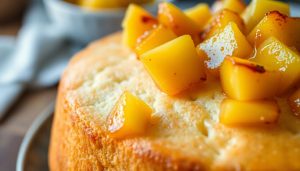Picture a beautiful seafood platter shining on a bed of ice. Wow! But what if the ice isn’t keeping its end of the bargain? What if the food is getting warm? Using ice for food display is also about food safety. In this article, we discuss those important rules to keep safety and food in ice.
How to Understand the Temperature Danger Zone
Keeping food in a controlled temperature is so important because in the other case, bad stuff gets to grow. This section is going to define the importance of temperature and how to monitor it.
What is the Temperature Danger Zone?
The temperature danger zone refers to a temperature range of 40°F-140°F (4°C-60°C). Within this temperature range, bacteria tend to multiply rapidly. If food is consumed, it can cause ill health states. Therefore, keep food outside this temperature range!
Why Temperature Control is Important?
Think of bacteria like tiny monsters. They multiply like crazy in the danger zone. The longer food sits there, the more monsters grow. This increases the risk of food poisoning. Temperature control slows down bacteria growth. It keeps your food safe.
Tracking Temperature for Food
Get your thermometer out and check the food’s temperature often. Insert the thermometer into the thickest part of the food. It should be below 40 degrees Fahrenheit (4 degrees Celsius). If it is warming up, add ice on it more. Check every couple of hours.
Ice Options for Food Keeping
Not every ice type is the same. Some types are better than others for keeping food cold. Let’s check out what suits you the best.
Flake Ice: The Best for Seafood and Produce
Flake ice is like little snowflakes. A lot of surface area. For quick and even cooling of food. Good for soft items like seafood and fruits where it won’t bruise. So, overall, this option will benefit keeping food fresh.
Crushed Ice: General-Purpose Applicability
Crushed ice works with tons of things. It keeps food cool. But it has an important downside. It melts faster than flake ice. So you have to change it out more frequently. It is a good general-purpose choice. Drain off the water.
Dry Ice: Use with Extreme Care
Dry ice is super cold. Dry ice can injure you. Only use it if you know what you’re doing. Do not let it touch food directly. Generally, it does not make a good choice for food display purpose. Handle with care.
Preparing Food for Ice Display
How you prep the food matters. Sanitizing for cleaning and chilling are all important. This chapter explains it well.
Sanitize the Food and Equipment
Scrub every vegetable and fruit. Sanitize any equipment you are going to use. This eliminates pathogenic bacteria that could cause food poisoning. Always starts with a clean act of doing food.
Pre-Chilling Food Items
Before placing food on ice, chill it. Chill to less than 40°F (4°C) first. This increases the life span of the ice. It also keeps the food colder. The food can be pre-chilled quickest in a blast chiller.
Safe Portioning and Arrangement
Platter food in less quantity. It cools quickly. Avoid overloading the food. This leads to the trapping of warm air. Position the food where the air can interflow with and around it. Portioning has to be safe.
Maintenance of the Ice Display
Equally as important is how to maintain the cold after the display has been set up. The success often lies in the fine points.
Creating the Layer on the Bottom
An insulating layer must be thick. This keeps food nice and cold for an extended period. You could also put it into an insulated application for good measure—pretty thick.
Keeping Food Above Meltwater
Meltwater becomes a great harbor for bacteria. Food must not rest on this. Infuse racks or perforated containers into it. This keeps food suspended above the water. Food would be safe from the contaminant.
Adequate Replenishing and Drainage of Ice
Durably refill: ice. Drain the meltwater. This will keep the display cold and clean. Always check the temperature. Stay on it!
Preventing Cross-Contamination
Separate different foods. Cross-contamination can occur in those instances. This follows the preventive guideline.
Dedicated Utensils for Each Food Item
Use different spoons and tongs for every food. This prevents cross-contamination. Don’t use the same utensil for raw and cooked food. This is how cross-contamination occurs.
Barrier Protection
Sneeze guards: Use Them! Food can also be covered with plastic wrap, thus protecting it from germs in the air. As a bonus, it also protects the food from menial creatures, i.e., customers. Literally, clean keeping!
Proper Hand Hygiene
Wash your hands frequently with soap and water. It should be done before preparing food, and it is one of the best prevention methods against food poisoning. It is a simple task, yet an essential one.
Legal Regulations and Guidelines
There are legal regulations concerning food display. There are always special regulations to keep in view with your local health department. Some of these rules are mentioned here.
Local Health Department Regulations
Your city or county is going to have rules that are aimed at food safety: ice displays are usually included in those measures. Be sure that you are following them!
ServSafe Standards for Cold Food Holding
ServSafe is food safety training. They have requirements for cold holding. Make sure you follow their rules. This will protect your customers. They’re good reference materials.
Conclusion
The safety of food on ice is a simple procedure. Just comply with these easy rules: Control temperature, prepare food correctly, and avoid cross-contamination. Safety makes everybody happy. Customers will appreciate it!


